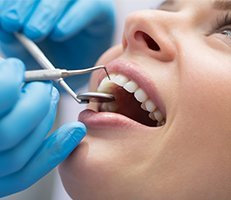For so many, needing corrective dental work is never good news. The time, cost, and actually using either braces or Invisalign is never easy. People sometimes worry about how they will look and what others will think of them when they wear braces. This is in addition to the adjustment, upkeep, and other duties involved in keeping traditional metal braces in tip top shape. However, one of the friendlier alternatives to traditional braces is Invisalign. It is a clear, plastic alternative to traditional metal braces that helps correct your teeth and create a beautiful, brilliant smile. Below, we’ll discuss what Invisalign is, how it differs from traditional metal braces, and what the benefits of retainer are.
What is Invisalign?
Invisalign is an invisible alternative to traditional metal braces that work to guide out of place teeth to their proper place. Unlike traditional braces, they are made of a clear plastic and are much easier to clean.
What are some of the benefits of Invisalign?
Easier to clean
One of the many benefits of retainer is that it is easier to clean. Unlike traditional metal braces, you only need to worry about cleaning your aligner trays instead of worrying about onerous brackets.
No need to adjust your current diet
Another one of the benefits of Invisalign is that you do not need to avoid certain foods or even some drinks because you are using it. One can simply remove the aligners and reinsert them after the meal is done and you have thoroughly brushed and flossed your teeth.
More comfortable
Traditional metal braces are notoriously uncomfortable. Between metal and bands needing tightening, there is little to look forward to when you have traditional braces. A benefit of Invisalign is a decrease of pain for the wearer’s mouth.
Fewer visits to the dentist’s office
Metal braces that are traditionally installed in someone’s mouth sometimes require many multiples of visits to a dentist’s office demanding time, money, and, most importantly, patience. A key benefit of orthodontics is that you receive multiple aligners for multiple stages at the same time, eliminating the need for some of those visits.
Look better
Although many people profess not to care about how traditional metal braces make them look, they often shy away from photos at social or professional occasions to not showcase the braces. A tangential benefit of orthodontics is that taking photos will not be impacted and you can showcase you winning smile with confidence while maintaining a professional demeanor.
What can I do if I want to take advantage of the benefits of Invisalign?
If you want to explore the benefits of Invisalign or whether Invisalign aligners are right for you, call our Lake Success office today. Our New Hyde Park dental professionals are standing by to help you and ensure all your questions and needs related to the benefits of Invisalign are answered.




